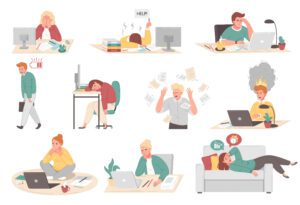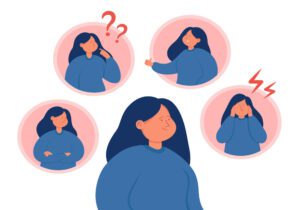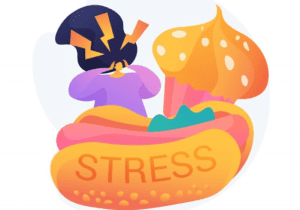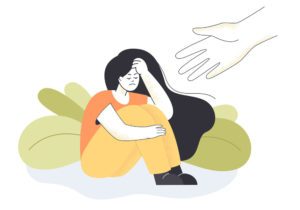Breathing Techniques
This article has been researched and written by Yassine Tayie. AI has not been used in producing this article.
Breathing has always played a central role in body-centered healing techniques such as meditation and yoga. It can also be found across various cultures and spiritual practices. On a less esoteric note, science has also shown interest in the subject, and studies have highlighted various positive effects of regular breathing exercises. Several studies (Laborde et al., 2017; Tharion et al., 2011; Lehrer et al., 2003) have shown the benefits of breathing techniques. Today, I’ll share with you two techniques that stands out:
1. The 365 Method – also known as cardiac coherence
This technique is simple to integrate into your routine. Its main goal is to activate your parasympathetic nervous system, which calms the heart rate, lowers cortisol levels (the stress hormone), and improves your ability to process emotional information.
Known benefits include:
- Reduction in stress and anxiety levels
- Improved emotional regulation and mental clarity
- Better sleep quality
- Lowered blood pressure
- Enhanced heart rate variability (HRV), a marker of resilience
- Improved focus and cognitive performance
How to practice it:
- 3 times a day
- 6 breaths per minute → Inhale slowly for 5 seconds – hold for 1 – exhale slowly for 5 seconds
- For 5 minutes
I usually recommend doing it in the morning, midday, and evening. But the important part is adapting it to your lifestyle — you can practice it while walking to work, during a lunch break, or before sleep. What matters most is consistency.

2. The Wim Hof Method
You’ve surely heard of this popular gentleman who enjoys swimming in icy water. That alone sparked scientific curiosity, leading to the well-known Kox et al. (2014) study at Radboud University Medical Center in the Netherlands, which found that applying the WIMHOF method leads to:
- Reduced inflammation and improved immune response
- Better stress resilience and nervous system regulation
- Enhanced mood, focus, and cold tolerance
How to Apply the Wim Hof Method?
1. Breathing
- 30–40 deep breaths (inhale fully, exhale passively)
- After the last exhale, hold your breath as long as is comfortable
- Inhale deeply, hold for 15 seconds, then release
- Repeat for 3–4 rounds
2. Cold Exposure
- Start with cold showers, gradually increase duration
- Only progress to ice baths once you’re adapted—and always with caution
3. Mindset
- Stay calm and focused – consistency is key
To summarize :
- Cardiac Coherence (365) tends to bring a quiet kind of calm — a sense of slowing down, grounding, and softening. It’ s not dramatic, but the effects build over time. Clients often tell me they feel more centred, less reactive, and more able to stay present in their day. It’ s simple, discreet, and gently restores balance — like resetting your inner rhythm.
- Wim Hof, on the other hand, is a more intense experience. It wakes you up — physically and mentally. Many describe a rush of energy, light-headedness, and even a sense of power or control. There ’ s something raw and physical about it, especially when you add cold exposure. It’ s great for those looking to challenge themselves, feel more alive, or push through mental or emotional blocks.
Bear in mind these tips are for support, initiation. They are not cures, but they can help enhance your mood and widen your window of tolerance. Nothing, however, replaces a deep therapeutic work.
Stress vs. Anxiety vs. Burnout: How to Recognize the Difference
In today’s fast-paced world, understanding the differences between stress, anxiety, and burnout is crucial for …
Relocation Depression: Definition and Ways to Cope
Relocation depression, also known as moving depression, is a form of situational depression that arises from the stress …
How to Help Your Child with Anxiety Through Divorce
Divorce is a significant change that affects every member of a family. For children, the uncertainty and adjustments …
Depression vs Sadness: Understanding the Difference
While often used interchangeably, the terms “sadness” and “depression” represent distinct emotional states, each with …
5 Simple Mental Health Practices for Your Everyday Life: Nurturing Your Body & Mind
In today’s fast-paced world, it’s becoming increasingly evident that we need to place our mental health at the forefront
Ways to Reduce Anxiety in 2024
As we say farewell to 2022 and usher in the New Year, we look towards the future. With New Year’s resolutions on the docket, many of us are striving to achieve a calm life …
Navigating Compassion Fatigue in the Digital Age: A Call to Prioritize Mental Well-Being
Amid the constant stream of information and images that flood our screens, the toll on our mental well-being can be …
The Link Between Anxiety and Overeating
All of us have encountered moments of stress and unease throughout our lives. These feelings of anxiety not only bring…
10 Steps To Fix A Toxic Relationship
Every relationship has its fair share of ups and downs, but when toxicity creeps in, it can become a serious challenge. Toxic relationships can be emotionally draining and detrimental to our overall …
Exploring the Benefits of EMDR Therapy for Anxiety and Depression
Anxiety and depression are two of the most common mental health disorders worldwide, affecting millions of people every year. While traditional talk therapy and medication can be …











